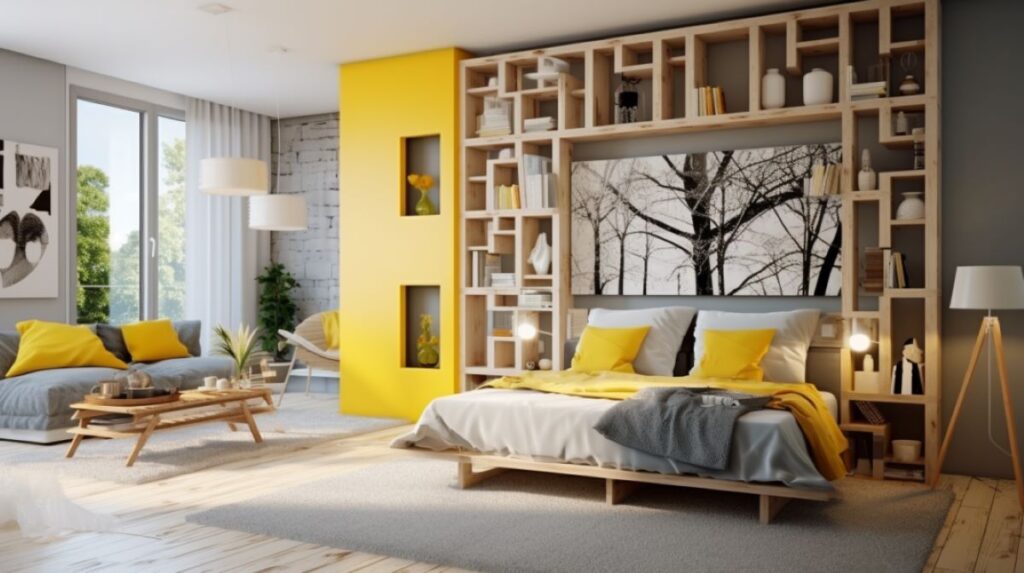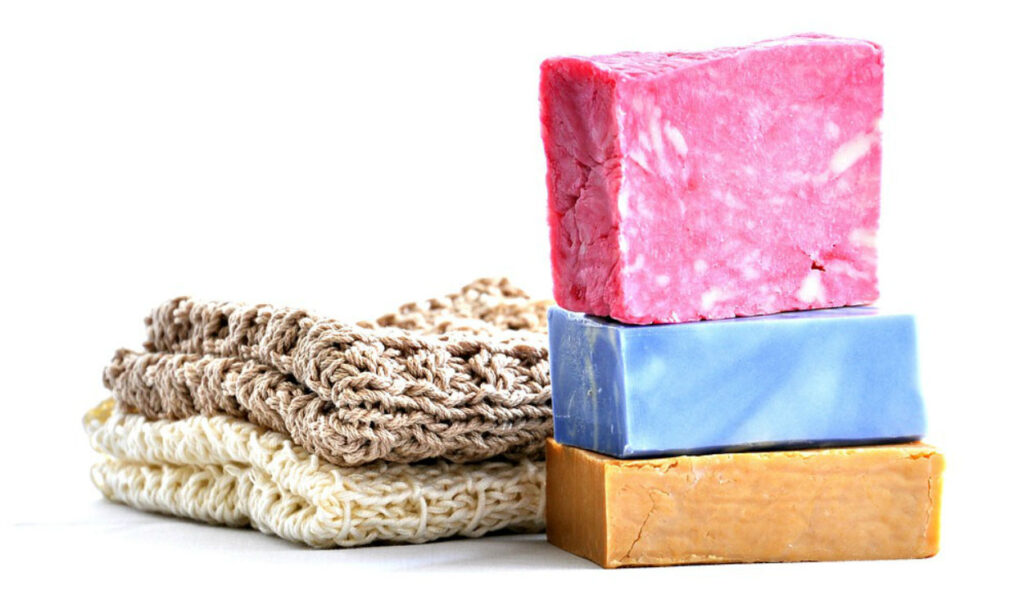Decluttering and Organizing: Simple Tips for a Tidy Home
Decluttering and organizing are two essential practices that can help individuals lead a more productive and fulfilling life. Clutter can cause stress, anxiety, and even depression, whereas an organized space can promote clarity, focus, and a sense of accomplishment.
- Decluttering Defined
- The Organizing Process
- Decluttering and Organizing by Room
- Maintaining an Organized Home
- Frequently Asked Questions
- How can I declutter my home quickly and efficiently?
- What are some minimalist tips for decluttering?
- What is the 12 12 12 rule for decluttering, and how does it work?
- What is the golden rule of decluttering and organizing?
- How can I declutter a room in just 30 minutes?
- How often should I declutter?
- What's the easiest room to organize?
- How do I stay motivated to declutter?
- What storage containers are best for organizing?
- How can I maintain my organized spaces?
Decluttering involves getting rid of unnecessary items that take up space while organizing involves finding a proper place for the remaining items.
Many people struggle with decluttering and organizing their homes, offices, or even their digital spaces. However, with the right mindset and tools, anyone can learn to declutter and organize effectively. Some tips for decluttering include starting small, setting goals, and being honest about what items are truly necessary.
When it comes to organizing, it’s important to create a system that works for the individual’s needs and lifestyle.
This may involve labeling items, using storage solutions, or even hiring a professional organizer.
By taking the time to declutter and organize, individuals can create a space that is both functional and enjoyable to be in. Whether it’s a small closet or an entire home, the benefits of decluttering and organizing are endless.
Decluttering Defined
Decluttering is the process of removing unnecessary items from a space to create a more organized and functional environment. Clutter can accumulate quickly, and it can be overwhelming to know where to start.
The first step in decluttering is to identify items that are no longer being used or are taking up unnecessary space. A good rule of thumb is to ask yourself if you have used the item in the past year. If the answer is no, it may be time to toss or donate it.
To make the process less overwhelming, it can be helpful to break it down into smaller tasks. One approach is to create a “get rid of it” box and go through each room, placing items that are no longer needed in the box. Once the box is full, donate or toss the items inside.
Another helpful tool is a decluttering checklist, which can provide a structured approach to the process. The checklist can include tasks such as sorting items into piles, identifying items to donate or sell, and organizing remaining items in a logical way.
When decluttering, it’s important to be mindful of the environmental impact. Consider donating items that are still in good condition, and properly dispose of any hazardous materials.
Decluttering can indeed feel daunting at first, but with the right approach and mindset, it can lead to a more organized and functional space very quickly. If you’re working with a large space or an enormous amount of clutter, eliminate the introduction of new clutter and stick to a disciplined schedule of removing existing clutter.
The Organizing Process
The organizing process can feel somewhat trivial or menial at first, but keep the end goal in mind. By following a few simple steps, you can create an efficient and organized system that works for you. Not only will consistent organization habits reduce disorganization in the future, but you’ll also feel better in your living space and improve the quality of life for your loved ones.
Decluttering and organizing aren’t menial tasks; they’re labors of love that create a nurturing and comfortable environment for your family.
First, set realistic goals for yourself. Don’t try to tackle everything at once. Break down the process into manageable tasks, and prioritize what needs to be done first. This will help you stay motivated and avoid feeling overwhelmed.
Next, evaluate your current systems. What is working and what isn’t? Are there areas where you can streamline or eliminate clutter? Take the time to level and declutter your space before implementing new systems.
When it comes to home organizing, it’s important to create systems that are easy to maintain. This means finding a place for everything and making sure everything is in its place. Consider using labels, storage containers, and other organizational tools to help keep things tidy.
Finally, don’t forget to evaluate your progress. Take the time to reflect on what’s working and what’s not, and make adjustments as needed. With a little effort and patience, you can create an organized and efficient space that works for you.
Decluttering and Organizing by Room
Decluttering and organizing by room is a great way to tackle the task of decluttering and organizing your home. By breaking the task down into smaller, more manageable parts, you can focus on one area at a time and avoid feeling overwhelmed.
Kitchen Organizing
The kitchen is often one of the busiest rooms in the house, and it can be a challenge to keep it organized. Some tips for kitchen organizing include decluttering your utensils, organizing your pantry, and finding creative storage solutions.
Bedroom and Closet Organization
The bedroom and closet are two areas that can quickly become cluttered. Consider using drawer dividers, shoe organizers, and other storage solutions to keep these areas organized.
Bathroom Organization
The bathroom is another area that can become cluttered quickly. To keep your bathroom organized, consider organizing your medicine cabinet, decluttering your drawers, and finding creative storage solutions.
Workspace Organization
Whether you work from home or just need a space to pay bills and manage paperwork, having an organized workspace is essential. Consider using a checklist to keep your desk organized and finding creative storage solutions for your books and other supplies. Under-desk organizers are especially useful for office spaces to prevent wasted space.
Living Room Organization
The living room is often the hub of the home, and it can be challenging to keep it organized. Some tips for living room organization include decluttering bookcases, consoles, and magazines and finding creative storage solutions for your TV and other electronics. Coffee tables with storage compartments and other furniture with built-in storage can be especially useful.
Entryway Organization
The entryway is the first area of your home that guests see, so it’s essential to keep it organized. Consider using hooks for coats and bags, a shoe rack for shoes, and finding creative storage solutions for other items.
Laundry Room Organization
The laundry room is another area that can become cluttered quickly. To keep your laundry room organized, consider using bins for sorting clothes, finding creative storage solutions for cleaning supplies, and organizing small areas. If you have a larger laundry room, organize the room by usage. Dirty laundry has its own space; clean laundry has its own spot, a separate area for ironing, and so on.
Organizing Other Areas
In addition to the rooms listed above, many other areas of your home can benefit from decluttering and organizing. Consider organizing your garage and outdoor areas, finding storage solutions for your seasonal items, and decluttering your storage spaces.
Storage Solutions
Finding the right storage solutions is essential for keeping your home organized. Consider using containers, bins, and hooks to help you stay organized.
Disposing of Clutter
When decluttering, it’s essential to dispose of your clutter properly. Consider donating, selling, recycling, or throwing away items that you no longer need.
Maintaining an Organized Home
Once you’ve decluttered and organized your home, it’s important to maintain your systems. Consider using checklists and routines to help you stay organized and avoid clutter.
This is ultimately about transforming your mindset, leading to an organized lifestyle.
Eventually, your systems will become second nature, and you’ll gradually become a person of habitual organization.
The Psychological Benefits of Decluttering and Organizing
Decluttering and organizing your home can have many psychological benefits, including reducing stress and increasing energy. By creating an organized and clutter-free space, you can improve your mental health and well-being. But these benefits won’t end with you. Your entire family will experience the joys of a more organized living space.
Professional Organizing
If you’re feeling overwhelmed by the task of decluttering and organizing your home, consider hiring a professional organizer. They can provide resources and guidance to help you complete your decluttering project and enjoy your newly organized space.
Also, you don’t necessarily need them to partner with you for the entire process, but they can create a plan of action that won’t seem nearly as daunting as tackling everything yourself. Sometimes, the benefits of someone coming alongside you to say, “This isn’t nearly as bad as you think; you can do this; here’s an easy actionable plan…” can be incredibly helpful for morale.
Famous Organizing Methods
There are many famous organizing methods, including the KonMari method by author Marie Kondo.
Consider exploring these additional methods to find one that works best for you:
- The FlyLady System, created by Marla Cilley, focuses on establishing routines and breaking the home into zones for cleaning and decluttering.
- The Minimalist Game, also known as the 30-Day Minimalism Game, involves getting rid of items each day for a month, corresponding to the date (one item on the first day, two on the second, and so on).
- The 4-Box Method requires setting up four boxes during the decluttering process: one for items to keep, one to donate or sell, one for items to be thrown away, and one for items that belong in another room or space.
Get creative, get busy, get cleaning.
Frequently Asked Questions
How can I declutter my home quickly and efficiently?
Decluttering can feel like a daunting task, but it doesn’t have to be. One of the most efficient ways to declutter your home is to tackle one room at a time or to tackle clutter by categories across all rooms in the house (clothing, shoes, books, keepsakes, etc.).
One way to start would be by dividing a room into sections and then focusing on decluttering one section at a time. It’s also important to have a plan in place before you start so you know what you want to keep, donate, or throw away.
Perhaps have a box or bag for each (donation and throw away) readily available so that when you’re finished, you can immediately pack them into the car for a trip to Goodwill.
What are some minimalist tips for decluttering?
Minimalism is all about living with less and only keeping the things that bring you joy or serve a purpose. Some minimalist tips for decluttering include getting rid of duplicates, donating items you no longer use, and keeping surfaces clear of clutter. Remember, less is often more when it comes to decluttering.
What is the 12 12 12 rule for decluttering, and how does it work?
The 12 12 12 rule is a simple and effective way to declutter your home. The rule involves finding 12 items to throw away, 12 items to donate, and 12 items to put away in their proper place. This process can be repeated daily or weekly, depending on your needs.
What is the golden rule of decluttering and organizing?
The golden rule of decluttering and organizing is to keep only the things that you love or use regularly. This means getting rid of broken items, items that are out of style, or items that no longer serve a purpose in your life. Following this rule can create a more organized and clutter-free home. This doesn’t mean you can’t keep collectible or sentimental items.
Just be sure your living space doesn’t exist to serve sentimentality but rather suits an organized approach to function and comfort.
How can I declutter a room in just 30 minutes?
Decluttering a room in just 30 minutes may seem impossible, but it can be done. Start by setting a timer for 30 minutes and then focus on decluttering one section of the room at a time. Use the 12 12 12 rule to quickly sort through items and decide what to keep, donate, or throw away.
Don’t take breaks, don’t get distracted, you mean business!
How often should I declutter?
Most recommend decluttering common areas like the kitchen and living room monthly. Seasonal areas like the closet can be done quarterly. An annual deep declutter is also popular.
What’s the easiest room to organize?
Many say the bathroom and linen closet are good starting points since they have limited items. Categorizing similar items together seems to make organizing any room simpler.
How do I stay motivated to declutter?
Setting a timer for short bursts of decluttering helps avoid burnout. Listening to podcasts or music can also keep the mood light. Celebrating small victories is another way to stay motivated long-term.
What storage containers are best for organizing?
Clear plastic bins seem to be the most versatile option. Others like wicker baskets, fabric boxes, and wooden crates for aesthetics. Labeled containers in coordinating colors help everything feel tidy.
How can I maintain my organized spaces?
Many recommend doing quick straightening daily and revisiting organization systems seasonally to prevent things from slipping into disarray again over time.


